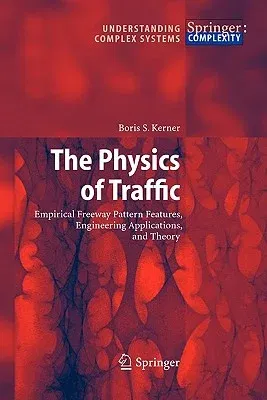This monograph is devoted to a new approach to an old field of
scientific investigation, freeway traffic research. Freeway traffic is
an extremely complex spatiotemporal nonlinear dynamic process. For this
reason, it is not surprising that empirical traffic pattern features
have only recently been sufficiently understood. Such empirical features
are in serious conflict with almost all earlier theoretical and model
results. Consequently, the author introduced a new traffic flow theory
called "three-phase traffic theory," which can explain these empirical
spatiotemporal traffic patterns. The main focus of this book is a
consideration of empirical spatiotemporal traffic pattern features,
their engineering applications, and explanations based on the
three-phase traffic theory. The book consists of four parts. In Part I,
empirical studies of traffic flow patterns, earlier traffic flow
theories, and mathematical models are briefly reviewed. Three-phase
traffic theory is considered as well. This theory is a qualitative
theory. Main ideas and results of the three-phase traffic flow the- ory
will be introduced and explained without complex mathematical models.
This should be suitable for a very broad audience of practical
engineers, physicists, and other readers who may not necessarily be
specialists in traf- fic flow problems, and who may not necessarily have
worked in the field of spatiotemporal pattern formation. In Part II,
empirical spatiotemporal traffic pattern features are consid- ered. A
microscopic three-phase traffic theory of these patterns and results of
an application of the pattern features to engineering applications are
pre- sented in Part III and Part IV, respectively.


